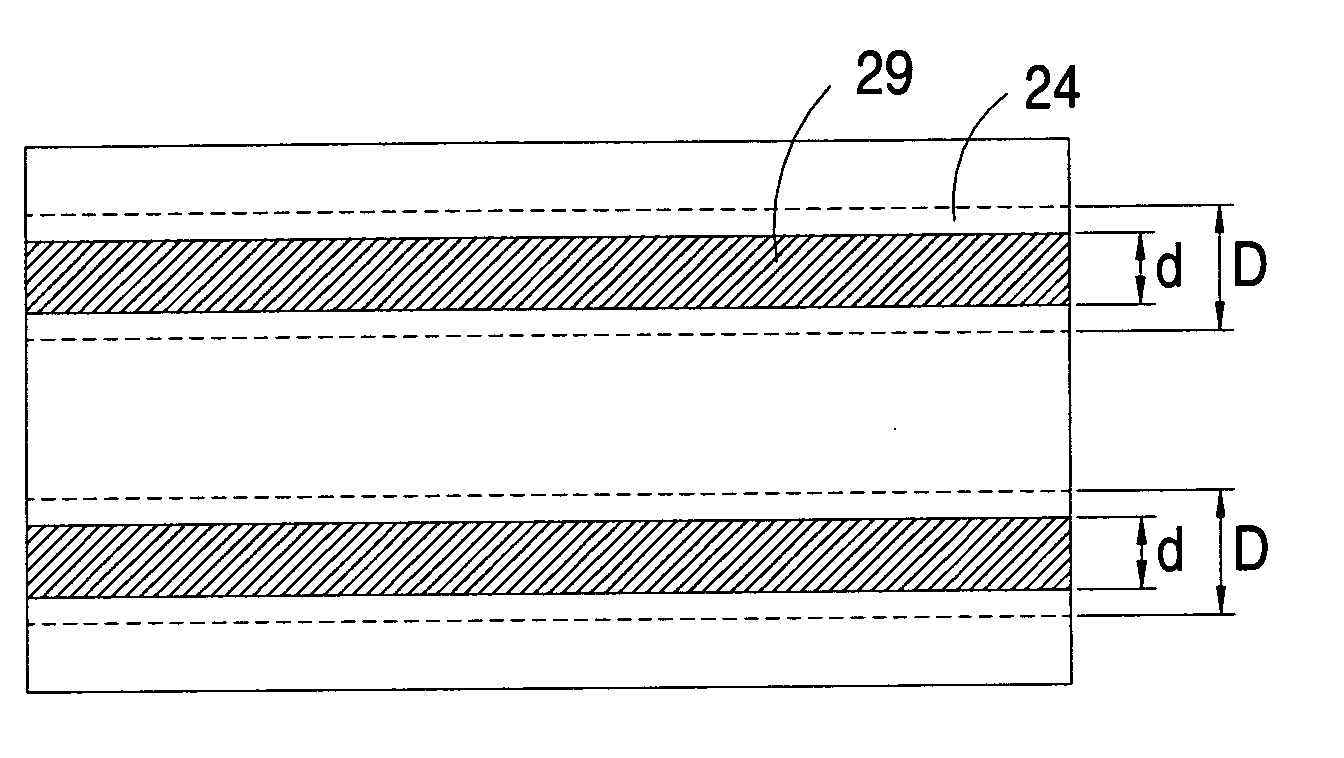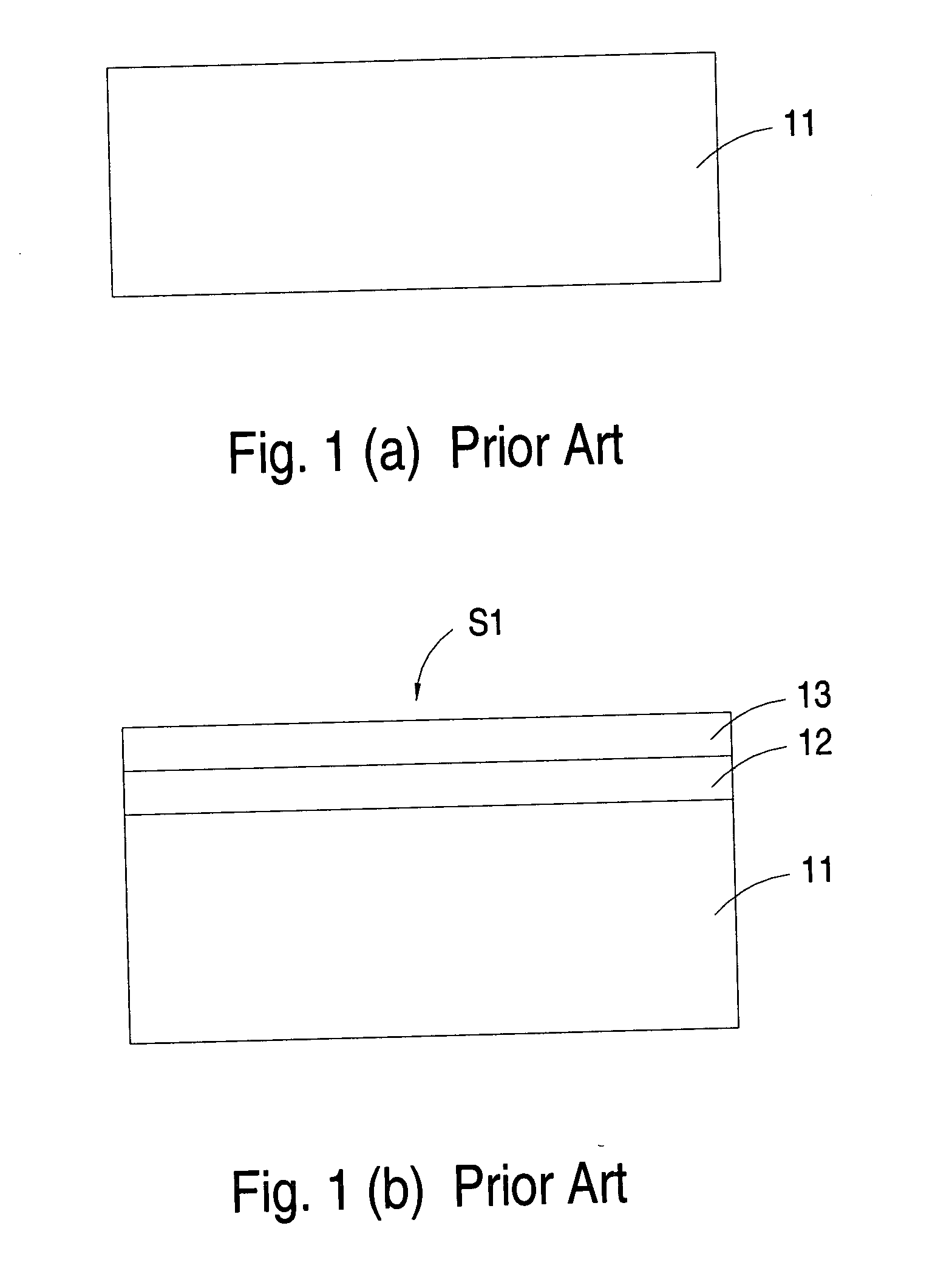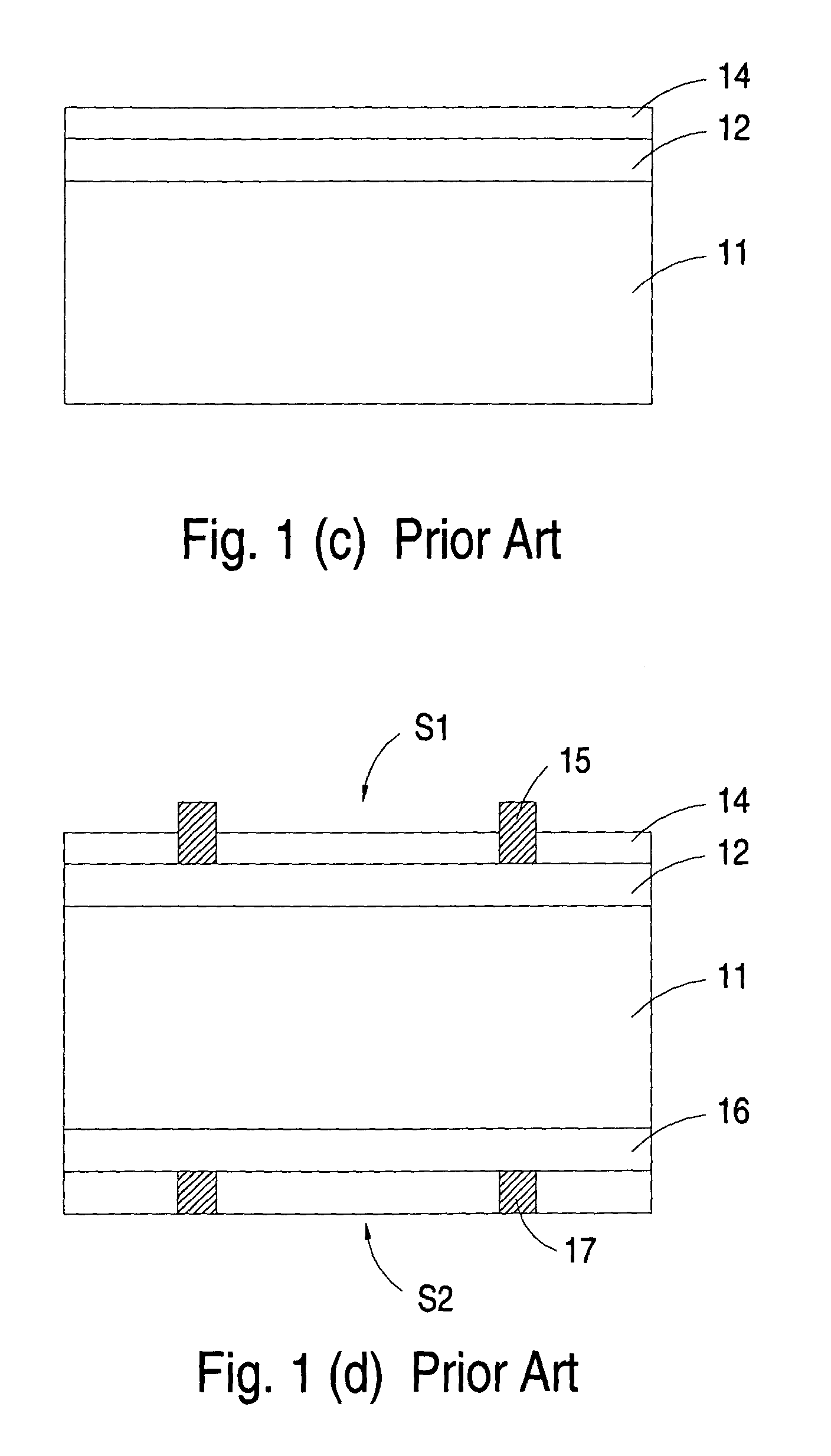Solar cell and fabricating process thereof
a solar cell and fabricating technology, applied in the field of photoelectric components and fabricating processes thereof, can solve the problems of insufficient energy conversion efficiency of the overall solar cell, insufficient blue light absorption of the solar cell, and undesirable electric conductivity of the emitter layer b>12/b>, so as to reduce the recombination rate of electron-hole pairs, reduce contact resistance, and increase the effect of blue light absorption
- Summary
- Abstract
- Description
- Claims
- Application Information
AI Technical Summary
Benefits of technology
Problems solved by technology
Method used
Image
Examples
Embodiment Construction
[0017]The present invention will now be described more specifically with reference to the following embodiments. It is to be noted that the following descriptions of preferred embodiments of this invention are presented herein for purpose of illustration and description only. It is not intended to be exhaustive or to be limited to the precise form disclosed.
[0018]Hereinafter, a process of fabricating a solar cell according to a preferred embodiment of the present invention will be illustrated as follows with reference to FIGS. 2(a)˜2(f).
[0019]First of all, as shown in FIG. 2(a), a first semiconductor substrate 21 is provided. An example of the first semiconductor substrate 21 includes but is not limited to a p-type semiconductor substrate. Next, concave and convex patterns with a minute pyramidal shape called as a texture are formed on the surface of the first semiconductor substrate 21 in order to improve light absorption and reduce light reflectivity. The texture structure is very...
PUM
 Login to View More
Login to View More Abstract
Description
Claims
Application Information
 Login to View More
Login to View More - R&D
- Intellectual Property
- Life Sciences
- Materials
- Tech Scout
- Unparalleled Data Quality
- Higher Quality Content
- 60% Fewer Hallucinations
Browse by: Latest US Patents, China's latest patents, Technical Efficacy Thesaurus, Application Domain, Technology Topic, Popular Technical Reports.
© 2025 PatSnap. All rights reserved.Legal|Privacy policy|Modern Slavery Act Transparency Statement|Sitemap|About US| Contact US: help@patsnap.com



